This post looks at how and why people are using the private browsing mode.
Private Browsing, also known as InPrivate in Internet Explorer and Incognito mode in Google Chrome, is a special mode where the browser doesn’t record the browsing activity on the local device. The promise made to the user is that when the private windows are closed, no trace will be left on the computer. Technically, this is achieved by storing everything related to browsing, including the cache and history, in the RAM and wiping it out when the private browsing windows is closed.
However, having a feature that works as intended does not necessarily mean that users actually know about it, understand what it does, or use it correctly. Making sure that users understand what they are getting out of private browsing has become increasingly important, as a few browsers, such as Firefox, Brave, and Opera, have decided to add features to private browsing to mitigate web tracking. These additional features, for better or worse, blur the limitations of private browsing and potentially shift users’ expectations.
Since our initial research paper on private browsing and original survey were produced, the landscape has drastically changed, so it was time to run an improved online survey to better understand why users use private browsing and their expectations. Expanding on the original survey, I asked the following questions:
- Do you know what private browsing is, and do you use it?
- What do you use private browsing for?
- Where do you use private browsing?
- Who are you hiding from when you use it?
This post analyzes the results of this survey and, whenever possible, contrasts the responses received in June 2017 with the ones from April 2012 and the DuckDuckGo study to understand whether private browsing habits have changed in recent years.
This post also reflects on how the new private browsing features introduced by Opera, Brave, and Firefox potentially help or harm users. The survey was run via Google consumer surveys with at least 200 US respondents for each question.
How many people know about private browsing?
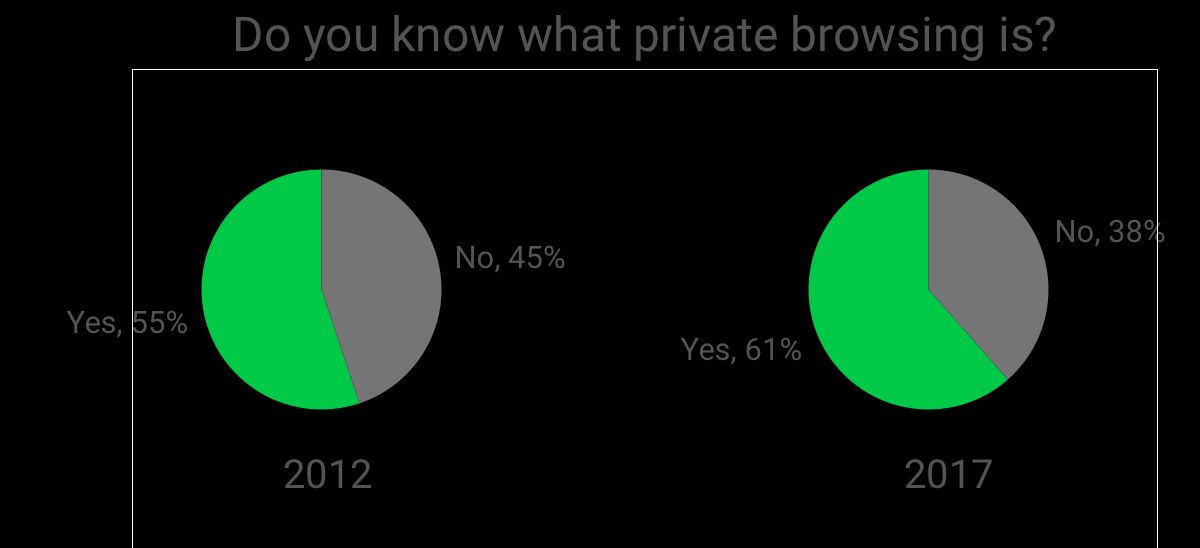
As of 2017, almost two out of three Internet users (61%) think they know what private browsing is, as reported in the pie chart above. This is a 10% increase compared to 2012, which is great because it means that more people know they can use it if they need to. The 2017 survey results are in the ballpark of the DuckDuckGo results (when accounting for variance), which show that 67% of the people surveyed know about private browsing.
How many people use private browsing?
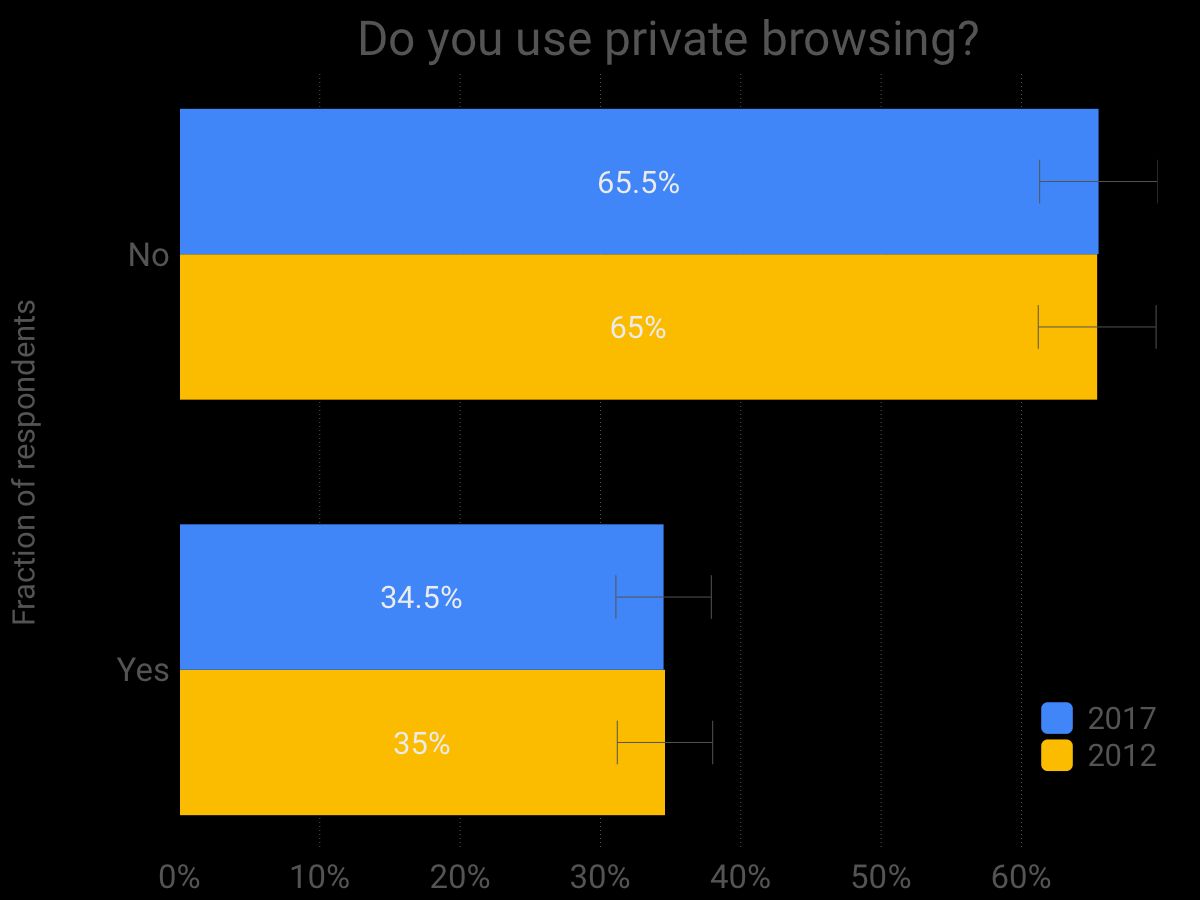
Overall, 20.1% of surveyed users use private browsing, which means that a little over one in three (35%) people who know about private browsing mode use it. I was expecting this number to have increased since 2012 given how much privacy is in the press, but the fraction of people using private browsing has remained almost unchanged.
So how many more people are using private browsing today? Given that the number of people knowing about private browsing has increased by 6% and that one person in three who know about this feature uses it, we can estimate that the number of users has increased by roughly 2%.
DuckDuckGo asked if people used private browsing “at least once,” so their results are not directly comparable to the survey results. That being said, the results appear to roughly match when considering only people who report using private browsing frequently. For reference, DDG found that roughly 35% of the people used it infrequently.
What do people use private browsing for?
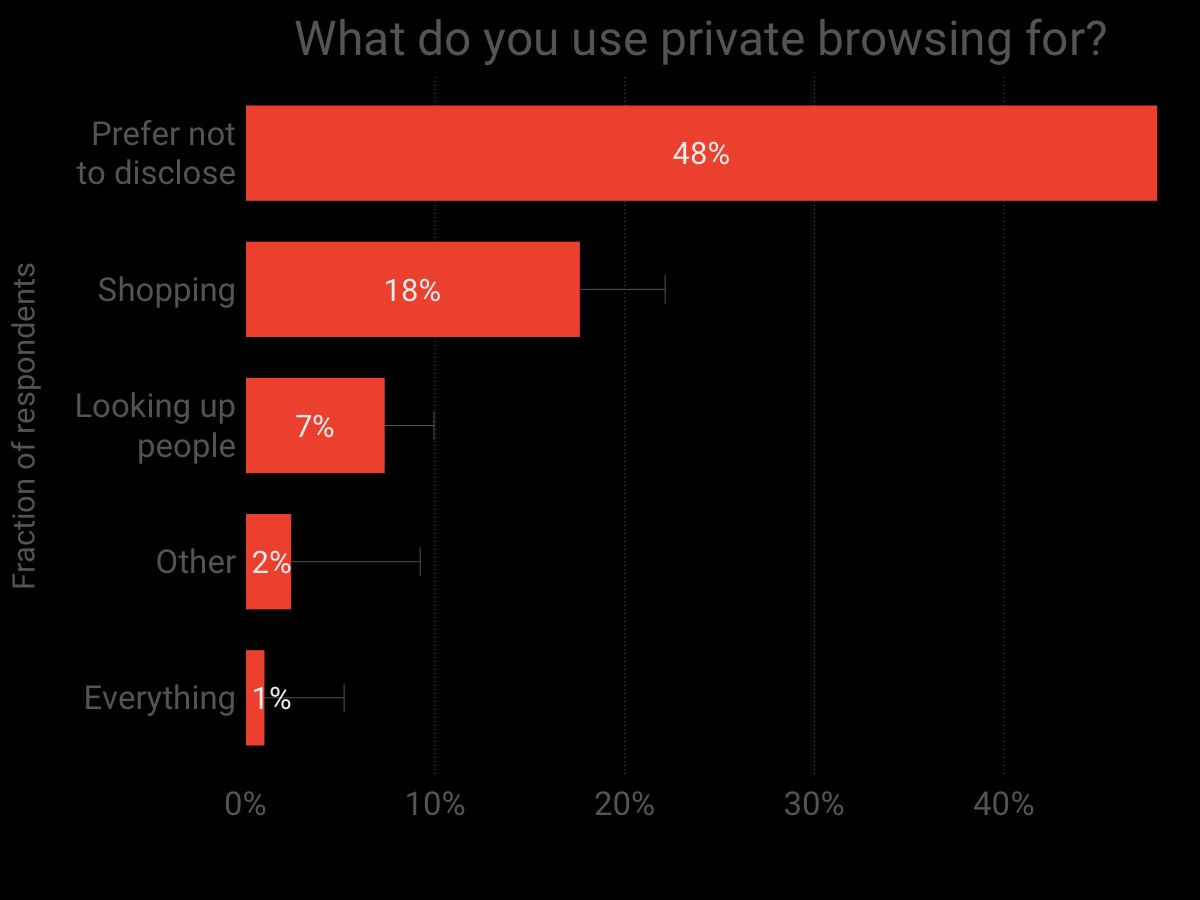
Unsurprisingly, most people refused to answer this question (48%). They mostly use it to search for specific things that they most likely don’t want to have in their history and be part of personalized search (37.2%). Surveys are clearly not the best approach to understand why people are using the private browsing mode because of the embarrassment factor.
Who are users hiding from when using private browsing?
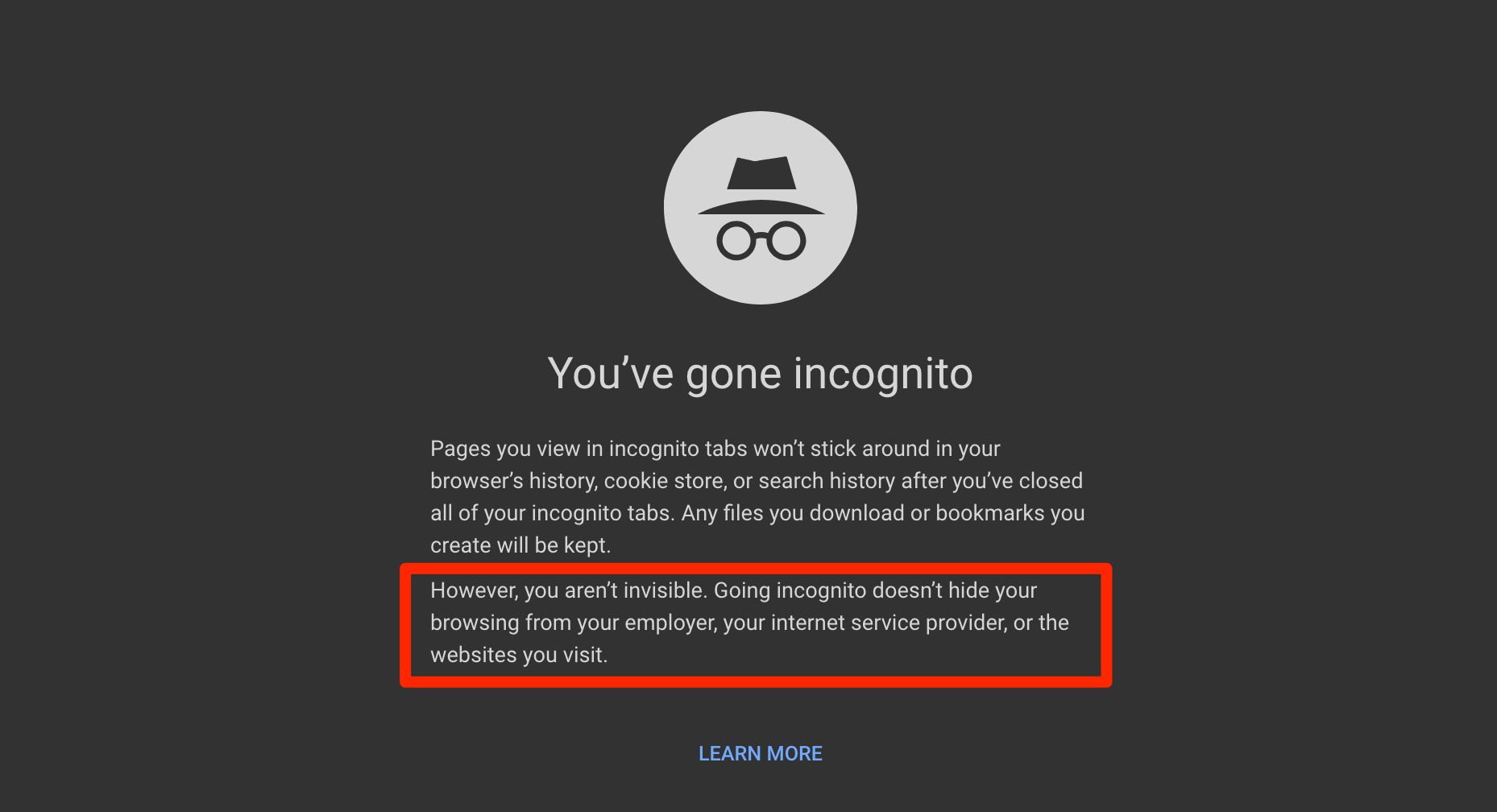
As discussed at length in our research paper about private browsing, a key concern about private browsing is that people might misunderstand what it can protect them from. Browsers try to mitigate this issue by showing a short intro text when people enter a private browsing mode. For example, the screenshot above from Chrome’s Incognito mode reminds the user that the incognito mode doesn’t prevent ISPs or websites from tracking user’s browsing.
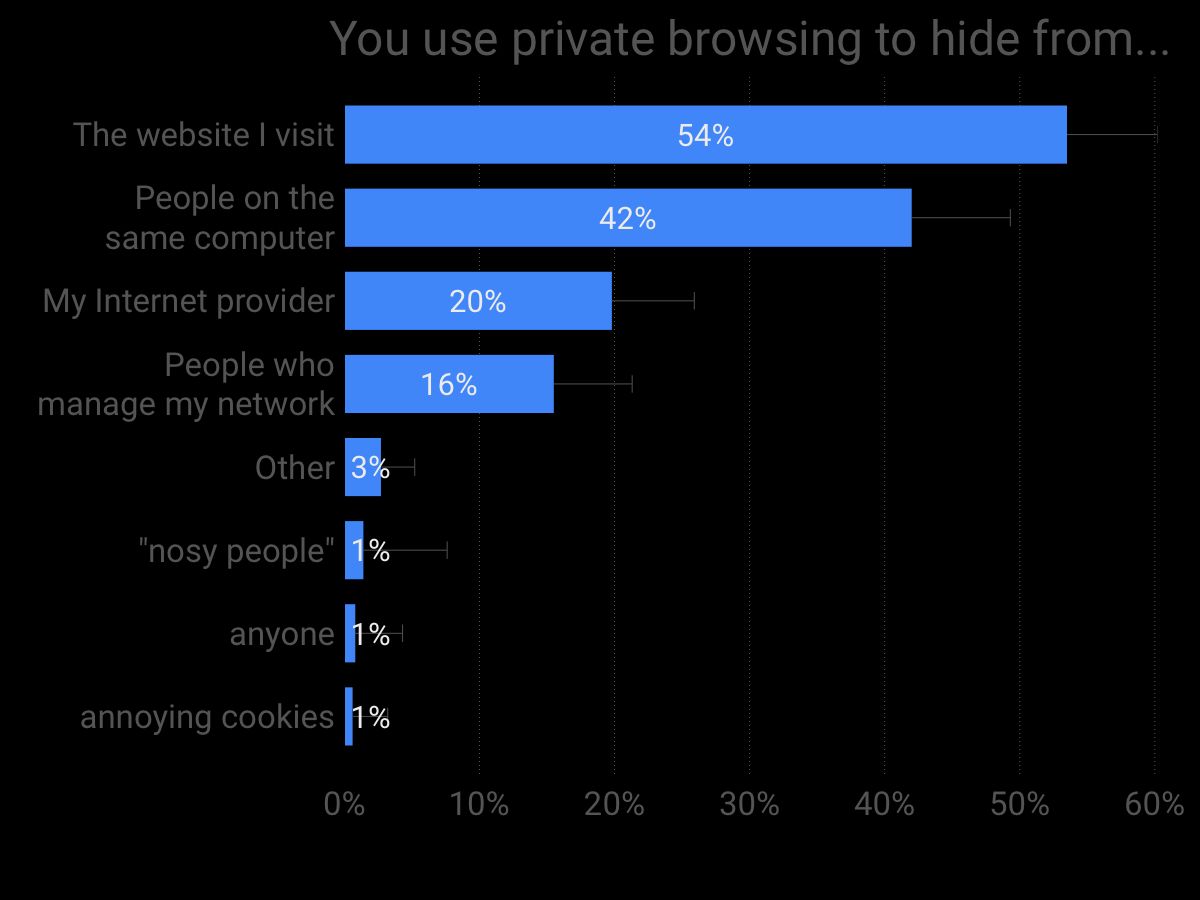
Though browsers do their best to inform users of the limitations of private browsing, most of the survey respondents use private browsing for the wrong reasons. Most (53%) use it to protect themselves from the websites they visit, which is not something private browsing is meant for. Only 42% of the respondents claim to use it for its intended purpose, which is not leaving a trace on the local computer. These results emphasize the need to raise awareness of what private browsing can and cannot do (
Expanding private browsing functionality
Preventing web tracking is a notoriously difficult if not an impossible task, which is why browsers generally do not try to address it initially to avoid giving the user a false sense of security.
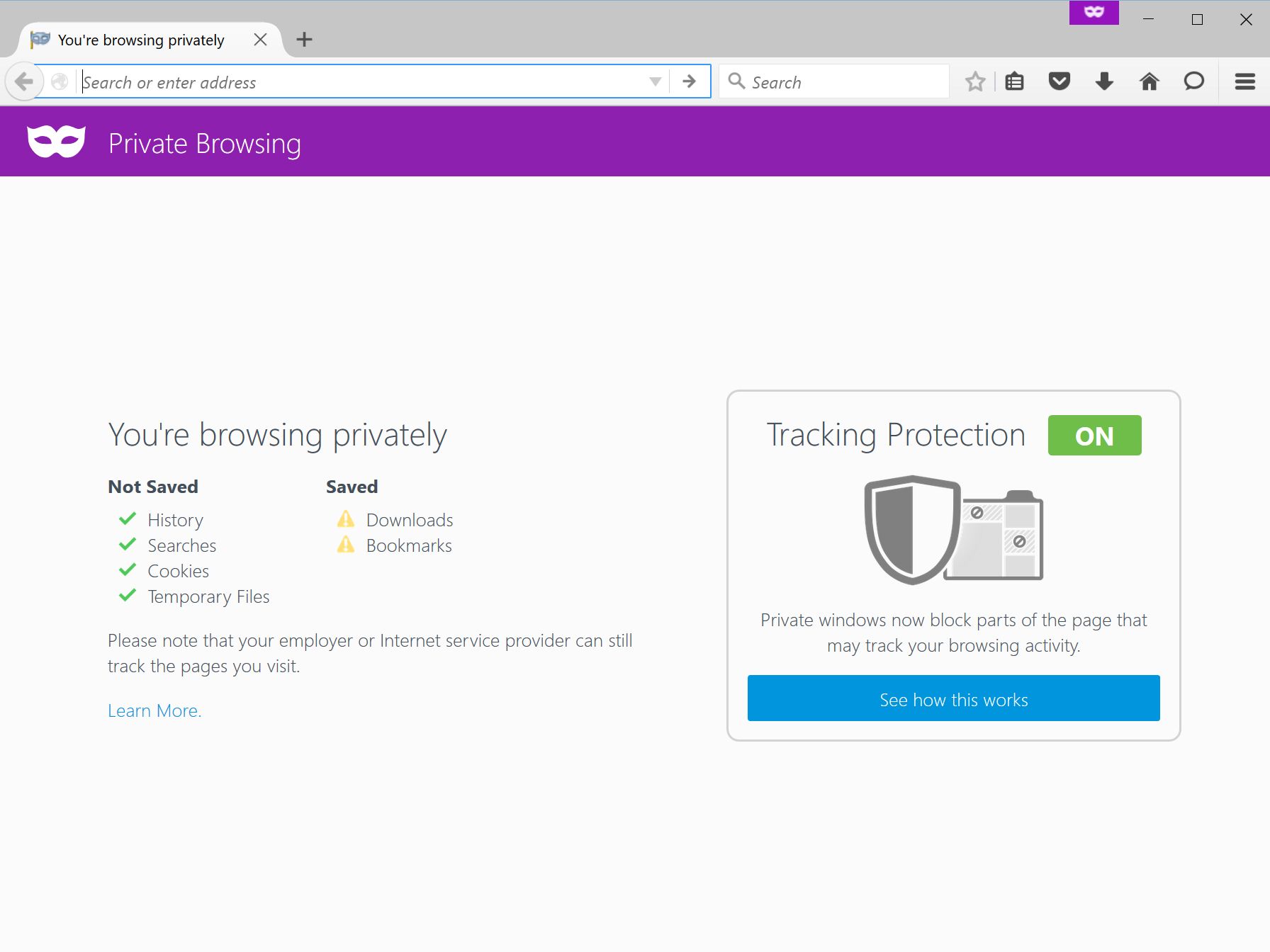
However, Firefox, Brave, and Opera have recently decided to try to meet users’ expectations by adding features that help reduce website tracking. Firefox, as shown in the screenshot above, disables third-party cookies while using private browsing, whereas Opera offers a free VPN to mask the IP address, and Brave attempts to prevent fingerprinting.
While these features indeed reduce website’s’ ability to track users, they are far from being foolproof, which leaves us with private browsing modes that only partially do what users want. I am not sure whether this is better than not doing it at all, but it certainly offers users a choice, which is always good. We in the security community should be careful to clarify the limitations of each approach so users can make informed decisions.
Where do people use private browsing?
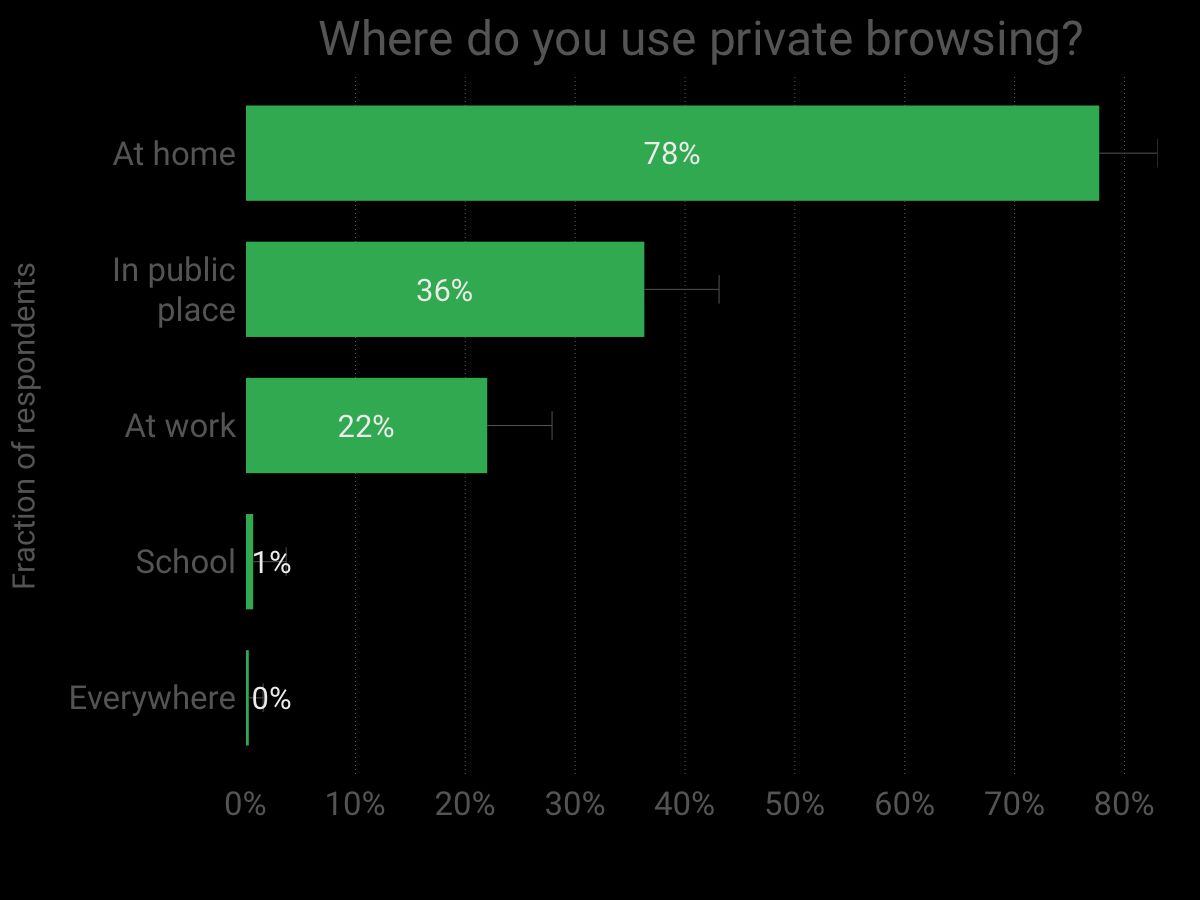
Obviously, the vast majority of the respondents use private browsing at home (77.7%). What is more surprising is that only 36.3% of the people who use private browsing use it in a public place. It might be that they never use a public computer, or it might be another symptom of people misunderstanding what they are protected from. This misunderstanding also likely contributes to the high usage of private browsing at work (22%), despite its ineffectiveness for hiding browsing patterns from network administrators. Another potential factor in the use of private browsing at work is separating personal browsing from work browsing.
Private browsing is an important feature that is used by over 20% of the Internet population. Unfortunately, many people use it for the wrong reasons, and this can be harmful, as it gives them a false sense of security. In recent years, Firefox and Opera have added features to mitigate web tracking to meet users’ demand. This is a very strong departure from the previous common stance, which was not to block stateless tracking, as it is almost impossible to do so perfectly. While this new direction benefits users by offering them more choices, it also increases the need to raise awareness about privacy-enhancing technology so that users can make informed choices.
A big thanks to Aleksandra Korolova and Ben Livshits who helped shape this blog post.
Thank you for reading this post till the end! If you enjoyed it, please don’t forget to share it on your favorite social network so that your friends and colleagues can enjoy it too and learn how to use private browsing.
To get notified when the next post is online, follow me on Twitter, Facebook, LinkedIn. You can also get the full posts directly in your inbox by subscribing to the mailing list or my RSS feed.




